|
In 1943, the USDA published the informational booklet Hunger Quits School. On December 5, 1942, President Franklin Delano Roosevelt signed an executive order creating the Food Distribution Administration, which oversaw, among other things, the school-lunch program. School lunch was influenced in part by the military draft. As many as a quarter of recruits were rejected for military service due to malnutrition. The panic around military readiness lead to many advancements in nutrition science and education of ordinary Americans about nutrition, including the development of the Basic 7 nutrition recommendations and yes, even school lunch. I've transcribed and shown the booklet in its entirety for your reading pleasure and edification. As you read you'll see how clearly school lunch programs were tied to military readiness even in the period, as well as how their execution differed in various communities. If you'd like to learn more about the history of school lunch, scroll to the bottom for reading recommendations. "Hunger has quit 93,000 schools throughout the United States where programs to provide noonday meals to students are operated by local communities in cooperation with the Food Distribution Administration. These programs are providing wholesome food to those who need it most - they are helping to build a healthy and physically fit population. Shortages of certain commodities cannot be permitted to impair the welfare of our future citizens. It is imperative that the youngsters who most need nourishing food get it in their school lunch. War adds to the urgency of the task. "A physically fit population and properly managed food supply are essential now more than ever before. Obviously, school-lunch programs are not substitutes for the courage of fighting men, for a fleet of airplanes, for guns, ships, tanks, or for the purchase of war bonds and stamps. Nevertheless, they are important in the Nation's War effort, since in modern total war the requirements for victory are indivisible." Images to left of text: Stylized black and white warship "Ships must transport food," stylized soldiers in a mess tent "Soldiers must eat," stylized workers in a factory with lunch room "Workers must eat," stylized woman typing and separate building with family in kitchen "Civilians must eat," stylized children sitting at table with knives and forks "Our children must eat." "WHY COMMUNITY SCHOOL-LUNCH PROGRAMS? "From the standpoint of the local community the reasons for operating lunch programs in the schools are immediate and easy to understand. Mothers and fathers, teachers and school administrators, doctors and health officers, and others in the community know the importance of having children eat properly. Since most children are away at school during lunch time for most of the year, the school lunch is an important part of the total diet of the individual. "Because parents, teachers, and others know the importance of proper food, that doesn't necessarily mean that all school children get the right kind of lunch or any lunch at all for that matter. In many cases, parents don't have enough money to put the right kinds of food in their children's lunch pails. In some cases - and this is increasingly true as more women go into war work - parents just don't have the time to put up the right kind of lunch for their children. In other cases, parents aren't well enough informed about nutrition to prepare an adequate lunch for their children. "All these and other factors have prompted local people to establish school-lunch programs as community enterprises. Programs are currently in operation to provide noonday meals to children in schools in every State and the District of Columbia, Puerto Rico, and the Virgin Islands. Thousands of persons - parents, teachers, volunteer workers, and well as paid workers - are giving their time and effort to carry on these projects, and millions of children are benefiting. "Although the Food Distribution Administration of the United States Department of Agriculture cooperated in school lunch programs in 93,000 schools during the 1941-42 school year by furnishing various foods without charge, the major responsibility for initiation of each program and for its successful operation is a community responsibility." Images to the right of text: Above, photo of young white boy outside a school eating a sandwich "The Cold Sandwich is no substitute." Below, photo of white children eating soup at a long table, caption continues ". . . For a Well-Balanced Hot Lunch." "METHODS OF ORGANIZATION DIFFER Just as there are tremendous variations in the types of communities, so are there considerable differences in the types of school-lunch programs. The complex organization of city life may find a parallel in the organization of the school lunch program in a large metropolitan area. In one large city, food for the lunch program is prepared in a big central kitchen. Hundreds of workers are engaged in such jobs as meal planning, food preparation, and dishwashing. From this central kitchen the food is delivered in heat-retaining containers by truck to the individual schools, where it is served to the children in lunchrooms. The children who can afford to pay for their meals do so with coupons which they buy at the school; those who cannot afford to pay are given coupons without charge. "The less complex pattern of life in rural areas may likewise be reflected in the organization of the school-lunch program. In one rural one-room school - and there are many of them in the United States - the children of the school bring various foods, such as potatoes and other vegetables, and seasonings from home. The teacher, with the assistance of the older students, prepares a single hot dish, usually a soup, a stew, or a boiled dinner. This hot dish is supplemented with foods which lend balance to the meal and can be eaten without cooking, such as citrus fruits or apples. The children set the tables and wash the dishes when the meal is finished. "These are but two of the many ways in which school-lunch programs are carried on. In operation they look easy. The routine is like clockwork. Each participant knows his job and does it. But even the most simple school-lunch project requires careful planning and hard work. Its successful operation depends on the continuing active interest of the local community." Images to left of text: Top, black and white photo of white adult women helping white students at lunch table, "The teacher, with the assistance of volunteers in the community, prepares the lunch." Bottom, black and white photo of open kitchen with white women cafeteria workers and line of white children, "Full-time workers prepare the food in a central kitchen from which it is delivered to the individual schools." "HOW TO GET STARTED IN YOUR COMMUNITY "Suppose the school in your community does not have a lunch program and you would like to see one in operation. How do you go about getting it started? "The first thing to keep in mind is that this is a job for your local people - yourself and your neighbors. Various agencies of the Government may lend you technical assistance, but the primary responsibility is yours. "If you have the interest and the willingness and the perseverance to follow through on a community lunch program, the thing to do is to get together with your neighbors, the parents of other school children, and see how much interest you can arouse and how much support you can get for the proposal. You will need much support if your plan is to be a success. "What you do next depends on what kind of community you live in. The procedure in a city of 100,000 population is different from that in a rural area. The steps to take are different in a city of 20,000 from those in a village of 2,000. But the procedure that has been followed in these different types of communities will give you an idea of what lies ahead in your effort to get started. "In one city of more than 100,000 population a group of mothers presented their proposal for a school-lunch program to the teachers and the principal of their neighborhood school. They were given a sympathetic hearing and arrangements were made to present the plan to the city superintendent of schools and the board of education. The meetings resulted in a survey to ascertain what facilities were available in the various schools for the operation of a lunch program on a city-wide basis, what additional facilities would have to be provided, and what would be needed in the way of financing. "The survey completed, plans were laid to put the school-lunch program into operation. Some of the needed facilities were provided from public funds, and" [. . . continued on next page] Image to right of text: Black and white photo of seated white adults as at a public meeting, "This is a job for local people . . . yourself and your neighbors." [continued from previous page] "the remainder was purchased by a number of civic and fraternal organizations which took an interest in the project. A permanent staff of paid workers was hired, and their work was supplemented by the work of volunteers. Much of the food was purchased locally, but some was provided without cost by the Food Distribution Administration. Those children who could pay a nominal sum for their lunch did so, and those who could not afford to pay were fed without charge. "Teachers took the initiative in serving lunches at school in one village of 2,000. They had seen some children sitting out in the cold eating sandwiches and others having nothing at all to eat. Investigating the possibilities of doing something about it, they learned that a school-lunch project was in operation in a nearby community. At the next meeting of the parent-teacher association they brought up the idea of a school-lunch program. The result was the appointment of a committee to visit the neighboring village and see how the program operated there. The committee made an enthusiastic report at the next meeting, and it was decided to present the whole matter to the local school board. "After a number of conferences with representatives of the State welfare department, the FDA, and other interested groups, the school board agreed to formally sponsor the lunch program. A lunchroom was set up in part of the school basement which was not in use. The county home demonstration agent provided technical assistance in meal planning. Two full-time paid workers were hired, and the rest of the labor forced was made up of volunteers. "The entire community, in one rural area, pooled its efforts to get a lunch program going in its one-room school. It was a real job, as the school lacked" [. . . continued on next page]. Images to left of text: Top photo, white adults gather around a table looking at papers "Parents and school authorities discuss a proposed school-lunch program." Bottom photo, white adults sit in auditorium, "Civic and fraternal organizations play an important part in the success of many school-lunch programs." [continued from previous page] "everything in the way of facilities and had no available space for cooking or serving. The men of the community solved the problem by getting together enough salvaged lumber and building a lean-to addition to the school, also tables and benches. The women of the community meanwhile organized a shower to collect the necessary pots, pans, and other cooking utensils. A merchant in the nearby town donated a second-hand stove. Each child brought his dishes and "silver" from home. Each family provided foods, and the mothers took turns going to the school to do the cooking. The school board, of course, approved the undertaking and formally sponsored the program to make it eligible for FDA assistance. "Should you contact anyone else for help in getting a school-lunch program going in your community? There is no one answer. In many counties there are home-demonstration agents, home-economics teachers, and home supervisors of the Farm Security Administration who can supply technical advice and assistance. Parent-teacher organizations, civic organizations, chambers of commerce, veterans' organizations and auxiliaries, State and local education departments, State and local health organizations, State and local welfare agencies, and the WPA are among the groups which have helped in other communities. In many cities there are representatives of the Food Distribution Administration who can supply information and advice regarding procedure for obtaining reimbursement from the FDA for the purchase of specified foods. "Your first objective in getting a school lunch program started is, of course, better meals for the children in school. This, too, was the main objective in the thousands of communities which are now operating the programs. These communities have found that many benefits to the children in school have stemmed from better nutrition." Images to right of text: top photo, white women stand next to table of plates of food, actively plating, "Teachers took the initiative in serving school lunches in a small community. Bottom photo, two white women stand in kitchen cooking, "Lunches like this mean more adequate diets for millions of children every day." "BETTER NUTRITION NOT THE ONLY BENEFIT "Records kept in many schools show that attendance is better after a school-lunch program is put in operation than it was before. One school reports 11 percent fewer absent than before the lunch program was started, another 8 percent; and still another 15 percent. Investigation shows that in many cases the better attendance is the result of less illness. Proper food does much to prevent illness, especially in growing children. "Thousands of doctors and dentists have gone into the armed forces. War needs have taxed our health facilities all along the line. It is more important than ever that as much illness as possible be prevented. To the extent that school lunches keep children healthy they are making a direct contribution to the welfare of the Nation at war. "There are many striking reports of children who have been built up physically as a result of eating school lunches. In one midwestern community an undernourished boy gained 25 pounds during a single school year. Many examples like this could be cited. Not only such run-down children, but in many cases the entire class of a school reports better physical fitness as a result of school lunches. "Many prominent health authorities have pointed out that it is a waste of the taxpayers' money to try properly to educate children who are malnourished. They simply cannot do good work when they are hungry. Such records as have been kept show that in almost every school where adequate lunches are provided the students are making better progress in their studies than formerly. "Teachers report that students are better behaved when they are properly nourished. Eating together in groups improves the table manners and the per-" [. . . continued on next page] Images to left of text: Top photo of white men administering vaccinations to other white men, "Thousands of doctors and dentists have gone into the armed forces." Bottom, young white children play on equipment outside, "Keeping children healthy is a direct contribution to the welfare of the Nation at war." [continued from previous page] "[per]sonal habits of many youngsters. Through the example of watching their schoolmates eat certain foods, children come to like foods previously unfamiliar. They eat what is put on the table. "In many communities the benefits of the lunch program are carried into the home. Children have reported back to their mothers the things that they learn about diet and better nutrition, with the result that the meals of whole families frequently have improved. "It is apparent that these benefits to children are all good reasons for parents, teachers, and local communities to be interested in school-lunch programs. How about the Federal Government and the Food Distribution Administration? "FDA'S PART IN SCHOOL-LUNCH PROGRAMS "One of the important jobs of the FDA is to assist in the management of the Nation's wartime food supply through the stimulation of increased production, the maintenance of machinery for orderly marketing, and the prevention of waste. School lunches, in addition to feeding those who most need proper nourishment, are one of the devices used in helping to do these jobs. "In recent months the war effort has made it necessary not only to maintain existing levels of food production but to increase these levels greatly. Although there has been a tremendous expansion in food production during the past year, some production goals have been revised upward. Under these conditions, when concerted efforts are being made to increase food production, it is important that farmers be able to market all they grow. Market stability is thus an important factor in stimulating increased production. "Not only is market stability important as an incentive to ever increasing output, but it is important in guarding against waste of food already produced." Images to right of text: top, a white farmer stands in the furrows of a field with sacks of potatoes, "It is important that good use be made of all that farmers produce." Bottom, two white men shake hands outdoors, "Sponsors buy from local producers and are reimbursed by the Food Distribution Administration." "In the past unstable markets sometimes made it impossible for farmers to harvest their entire crop and sell it at a price that would cover their costs. The result, when such conditions prevailed, was that part of the crop was not harvested but was left in the fields or in the orchards to rot. Such conditions might arise again for some commodities, even though supplies of certain other foods may be short, and if they do the school-lunch programs are a mechanism to prevent possible waste. "Sometimes food purchased originally for shipment abroad under the lend-lease program could not be used for this purpose because of changed requirements of our allies, lack of shipping space, or other uncontrollable factors. In such cases the school-lunch program provided a desirable outlet for the commodities. "In the past, the FDA's job in connection with school-lunch programs was to buy up foods and to channel them to schools for use by the youngsters who needed them most. Purchases were sent in carlots to the welfare departments of the various States. The State welfare department distributed foods to county warehouses which in turn distributed part of the supply for use in lunch programs in eligible schools. "Shortages born of the war - transportation, equipment, manpower - necessitated a revision of this distribution plan. In some large communities, commodities are still distributed to schools from warehouses operated by State welfare departments, but in most communities the program is now carried on under a local purchase plan. "Under this new local purchase plan, the FDA reimburses the sponsors for the purchase price of specified commodities for the lunches. The commodities eligible for purchase under the plan are given in a School Lunch Foods List which is issued from time to time. Products in regional abundance and those high in nutritional value have first consideration in compiling the lists. Sponsors buy from producers or associations of producers, or from wholesalers or retailers. They are reimbursed for the cost of the commodities up to a specified amount" [. . . continued on next page]. Images to left of text: top, two men load stack barrels, "A few foods are still available from the FDA for delivery to schools in some areas." Bottom, box trucks lined up outside a building as a man loads a box, "Sponsors arrange for the delivery of foods to the schools where they are used." [continued from previous page . . .] "which is based on the number of children participating, the type of lunch served, the financial resources of the sponsor, and the cost of food in the locality. "In addition to those foods for which the FDA provides reimbursement of the purchase price, local sponsors buy with their own funds such additional commodities as are needed to round out the meals. What better use can be made of some of our food supplies than to make them available to growing children who otherwise may not get enough to eat? "WHAT SCHOOLS ARE ELIGIBLE? "Schools eligible to participate in the program must be of a nonprofit-making character and must serve lunches to children who need them. Schools receiving FDA assistance must permit no discrimination between children who pay for their lunches and those unable to pay. A formal sponsor, representing the school, must enter into an agreement with the FDA that the conditions governing the program will be complied with. Nonprofit-making nursery schools and child-care centers are eligible for participation in the program. "From the standpoint of our national welfare it is important that all school children be properly nourished, and that all food produced be properly utilized. This explains the interest of the Federal Government in the community school-lunch program, since the Government represents all the people acting in concert. "Although the school-lunch programs alone have not succeeded in reaching all children who need more adequate nourishment, they have been instrumental in bringing food to a substantial number of them. During the peak month of March 1942 the lunch programs in which the FDA was cooperating fed 6,000,000 children. Nor have the lunch programs alone succeeded in making possible the most effective utilization of all foods produced. But they have been one means of working toward these two objectives. "The lunch programs have been a means of forcing hunger out of a great many schools in the United States." Images to right of text: Top: young white girls at play on a see-saw. Middle: a school building. Bottom: a white nun gives a sandwich and bottle of milk to a young white boy. "FOR MORE INFORMATION ON HOW TO GET A SCHOOL LUNCH PROGRAM STARTED IN YOUR COMMUNITY WRITE TO THE NEAREST REGIONAL OFFICE OF THE FOOD DISTRIBUTION ADMINISTRATION "If you live in one of the following States: Main, New Hampshire, Vermont, Massachusetts, Rhode Island, Connecticut, New York, New Jersey, Delaware, Maryland, or West Virginia - Write to: Food Distribution Administration Regional Office, 150 Broadway, New York, N.Y. "If you live in Virginia, Kentucky, Tennessee, North Carolina, South Carolina, Georgia, Florida, Alabama, or Mississippi - Write to: Food Distribution Administration Regional Office, Western Union Building, Atlanta, Ga. "If you live in Ohio, Indiana, Michigan, Wisconsin, or Illinois - Write to: Food Distribution Administration Regional Office, 5 South Wabash Ave., Chicago, Ill. "If you live in Minnesota, Iowa, Missouri, Kansas, Nebraska, South Dakota, or North Dakota - Write to: Food Distribution Administration Regional Office, Old Colony Building, Des Moines, Iowa. "If you live in Arkansas, Louisiana, Oklahoma, or Texas - Write to: Food Distribution Administration Regional Office, 425 Wilson Building, Dallas, Tex. "If you live in New Mexico, Colorado, Utah, Idaho, Montana, or Wyoming - Write to: Food Distribution Administration Regional Office, 1536 Welton Street, Denver, Colo. "If you live in Arizona, Nevada, California, Oregon, or Washington - Write to: Food Distribution Administration Regional Office, 821 Market Street, San Francisco, Calif." And that is the end of the transcription! What did you think? Were there any surprises in there for you? I had known for a long time that the school lunch program was a way to use up agricultural surpluses AFTER the war, but hadn't realized that using up wartime surpluses was a factor since the beginning. I also liked the emphasis on treating children who couldn't afford to pay no differently than those who could. FURTHER READING: If you'd like to learn more about the history of school lunch, check out these additional resources. (Purchases made from Amazon links help support The Food Historian):
Happy reading! The Food Historian blog is supported by patrons on Patreon! Patrons help keep blog posts like this one free and available to the public. Join us for awesome members-only content like free digitized cookbooks from my personal collection, e-newsletter, and even snail mail from time to time! Don't like Patreon? Leave a tip!
1 Comment
Anita Davis
3/4/2024 11:40:51 am
Thank you for publishing your research! I'm a volunteer with Save the Children Action Network and will reference your work during meetings this week with state legislators urging them to adopt universal school lunches.
Reply
Your comment will be posted after it is approved.
Leave a Reply. |
AuthorSarah Wassberg Johnson has an MA in Public History from the University at Albany and studies early 20th century food history. Archives
July 2024
Categories
All
|
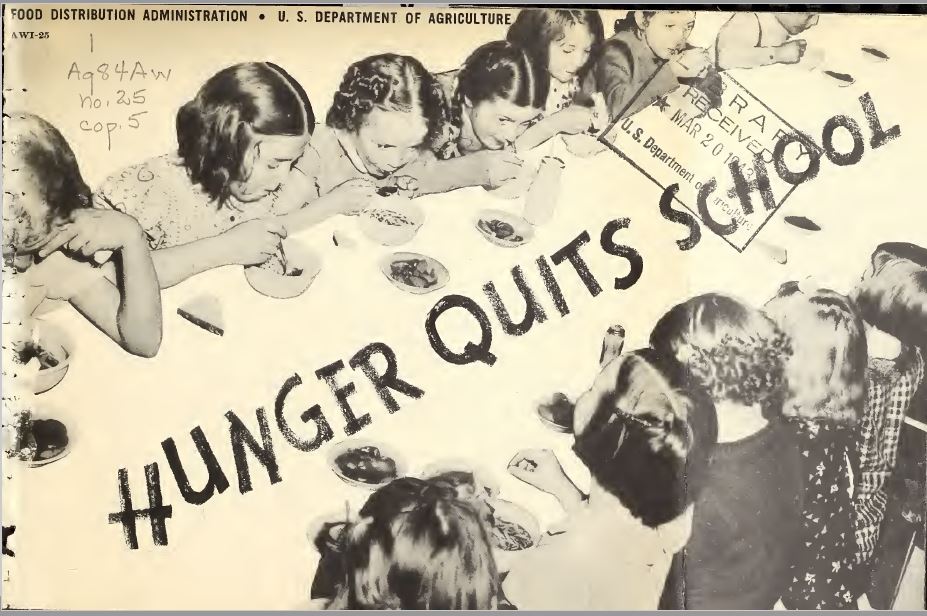
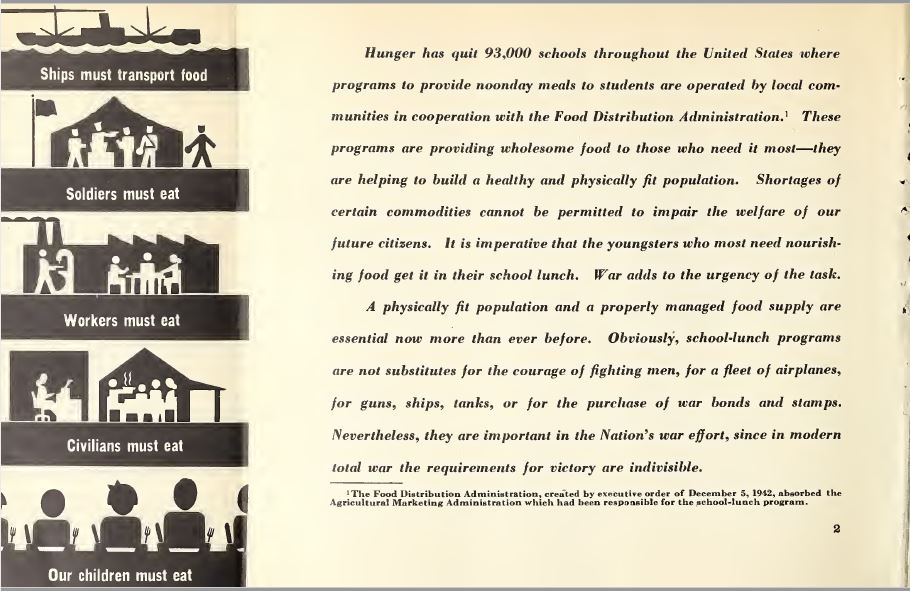

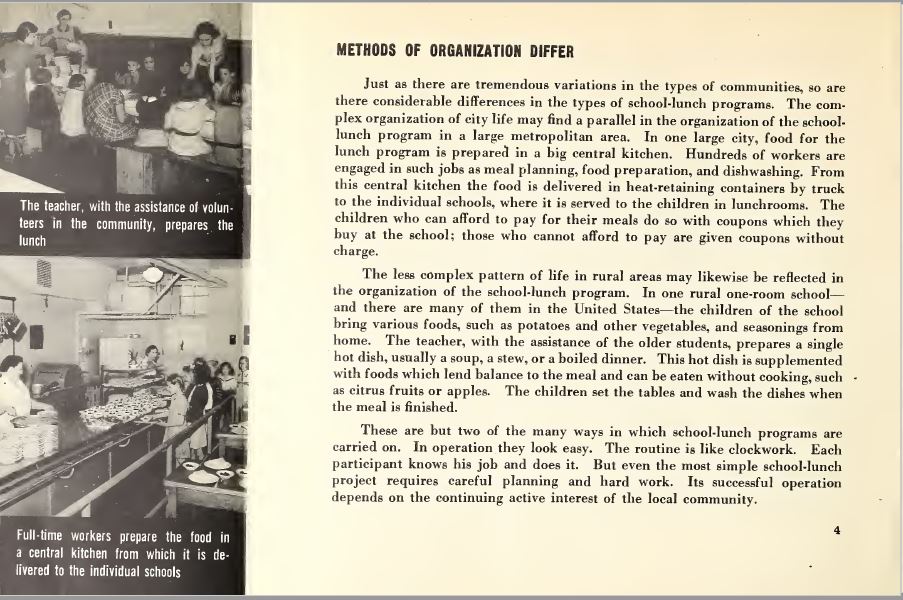
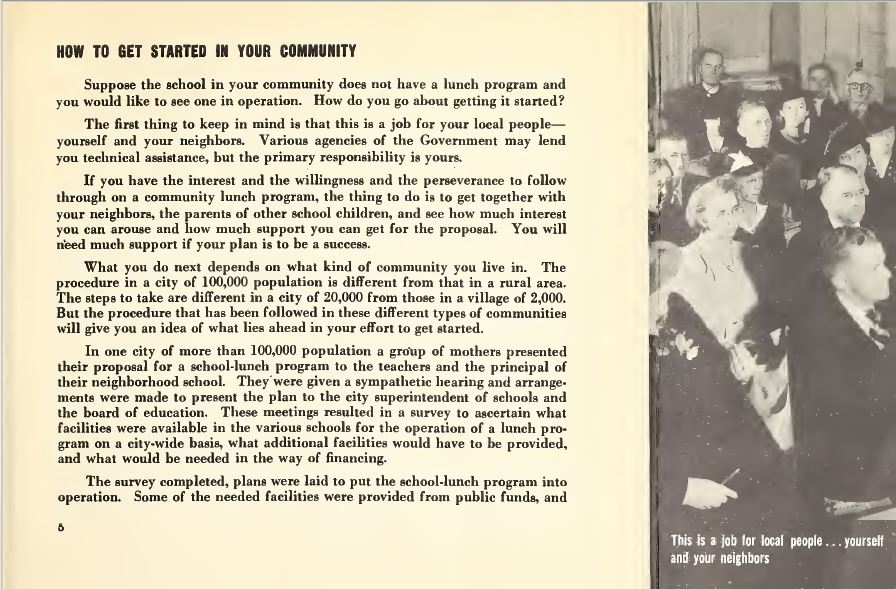
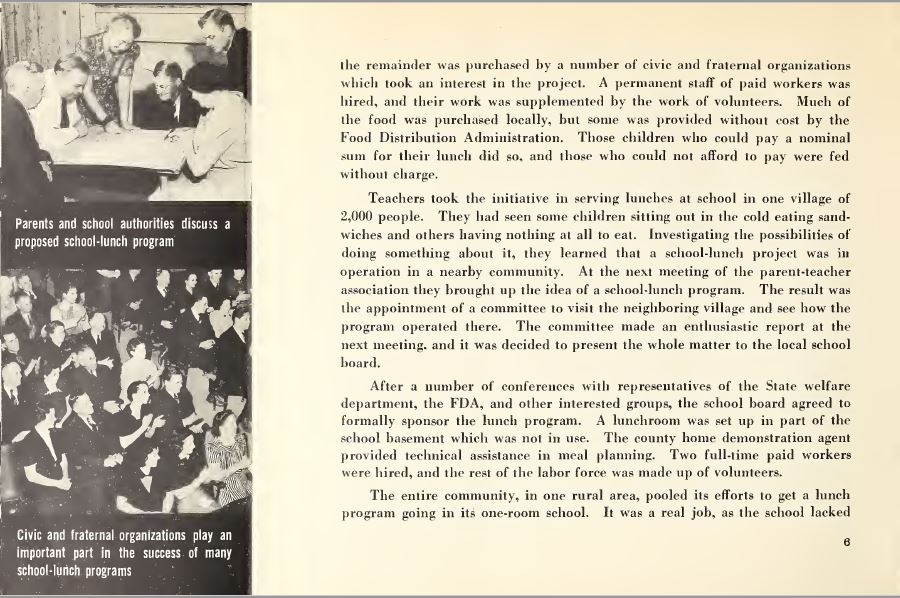
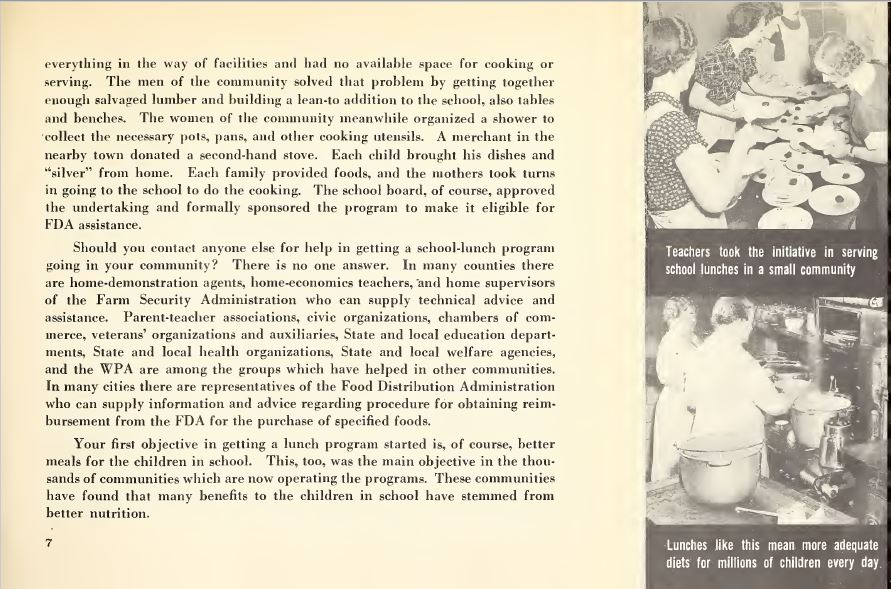
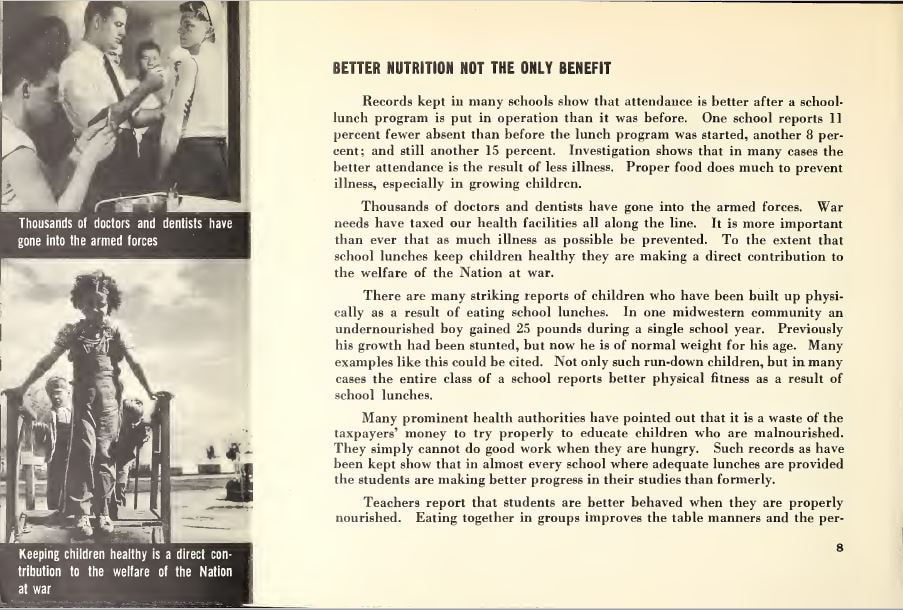
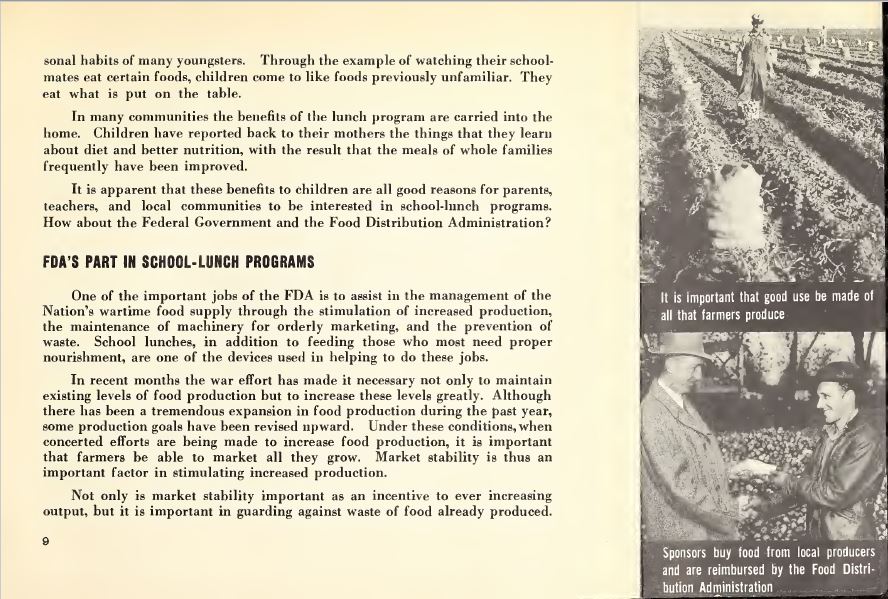
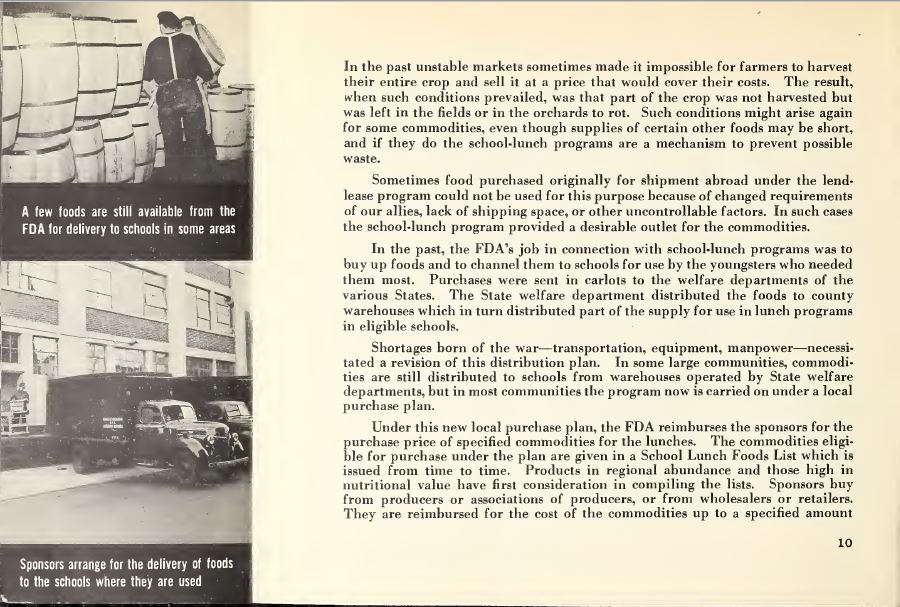
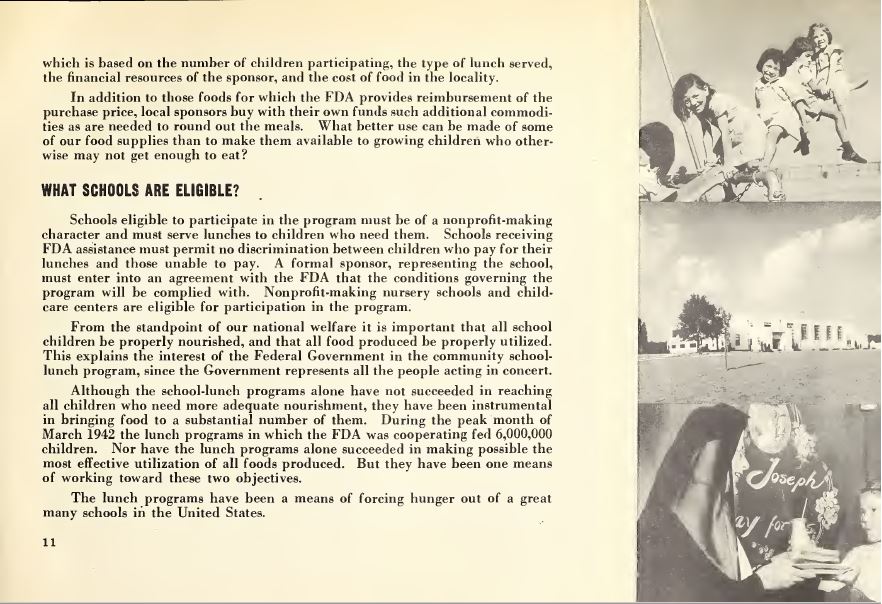
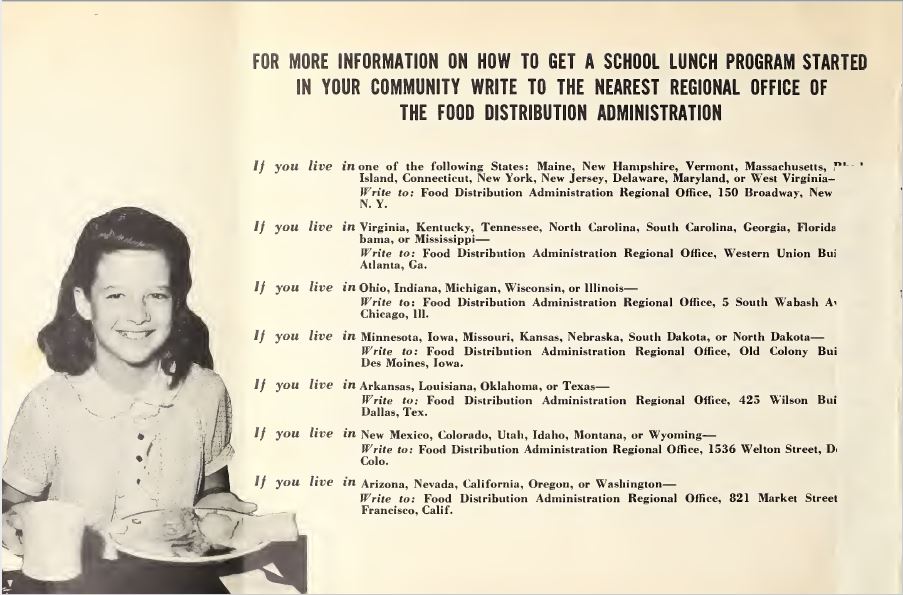

 RSS Feed
RSS Feed